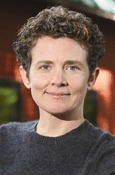If you obey all the rules, you miss all the fun.
—Katharine Hepburn
Sheila Lukins and I have always thought cooking should be about love, laughter and fun in the kitchen. And 25 years ago, that’s what we had in the kitchen of The Silver Palate, our small takeout food shop in Manhattan. We were up to our necks in excitement making food, catering, creating condiments and selling them to stores across the country. When an editor from Workman Publishing suggested that we write a cookbook, it seemed a wonderful way to tell everyone who we were. Our friends and clients thought we were crazy, that if we put our recipes into a book it would be the end of our takeout food business, and no one would come to the shop to buy our food. Our instincts told us they would, and we knew we had a few more recipe ideas up our sleeves. We had no idea how to write a cookbook, but this was the book we had always dreamed of writing. We wanted everyone to share our insatiable curiosity about cooking, and to feel as though they were invited to the parties we were giving.
The Silver Palate Cookbook was considered pretty unorthodox when it was first published in 1982. Instead of traditional chapters, we organized it around ingredients and our excitement about seasonal arrivals. We wanted an explosion of asparagus recipes and we wanted to celebrate tomatoes and apples, and berries too. We wanted everyone to revel in our chocolate recipes and we thought pasta deserved its own chapter (remember, this was 25 years ago!).
We were cooking our way, with the big flavors we craved. We wanted to share our recipes, even if they didn’t always follow classical conventions. We felt that Chicken Marbella, nutted wild rice, blanquette de veau, charcroute, pate maison (we could go on and on here) and decadent chocolate mousse could become favorites countrywide, not just on the Upper West Side of New York. We were part of the food renaissance in America and we wanted to share every bit of that fun with everyone who would listen.
To push the envelope even further, we wanted our book to be chatty, filled with stories about our experiences at our little shop. We added quotes because sometimes someone else had already said it best. Why not bring them into the party, too? Then we added kitchen tips, menus, ingredient lore and we topped it all off with Sheila’s charming drawings. Who could afford photography? Most of all we wanted people to feel our passion for cooking.
We had no idea whether anyone would like such a cookbook. But, about three months after it was published, we heard that it was being used for dinner parties all around Lake Tahoe. The word was spreading! Indeed, it became wonderfully popular. The Silver Palate Cookbook has been published all over the world: France, Japan, Germany, Holland, Australia and England. It’s in the James Beard Hall of Fame and, most importantly, in kitchens everywhere.
Now, 25 years later, we have The Silver Palate Cookbook 25th Anniversary Edition with dazzling color photos. Our recipes have suddenly come alive and nothing could be more fun than to see our familiar cookbook anew! And, in this new edition, we have the added joy of being able to reflect on all that has happened in food a whole new reason to celebrate.
Little did we know so many years ago that sharing our recipes would bring us such joy. Whether we’re at home or traveling, we always bump into people anxious to tell us about a Silver Palate recipe they’ve made, and we get letters saying how much they enjoy reading our book in bed. So many of you have become our pals instant friends along the way. Who would have thought that our lives would become so enriched, day after day, for so many years, just because we wrote a cookbook? It’s been a great ride! Thank you. Let’s all have a ball with this new edition for many years to come.
Julee Rosso is the co-author, with Sheila Lukins, of The Silver Palate Cookbook, and the owner of the acclaimed Wickwood Inn in Saugatuck, Michigan.










